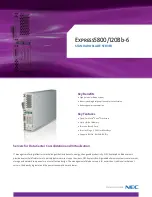GD32W51x User Manual
822
24.3.
Block diagram
Figure 24-1. USBFS block diagram
USB Clock Domain
DP
DM
ID
VBUS
USB
interrupts
Register
OTG
Control
Host Port
Control
Device bus
control
SIE
USB FS
PHY
Data
FIFO
AHB Slave
UTMI
Mux
Transcation
Scheduler
USB Clock
48MHz
24.4.
Signal description
Table 24-1. USBFS signal description
I/O port
Type
Description
VBUS
Input
Bus pow er port
DM
Input/Output
Differential D- port
DP
Input/Output
Differential D+ port
ID
Input
USB identification: Mini connector identification port
24.5.
Function overview
24.5.1.
USBFS clocks and working modes
USBFS can operate as a host, a device or a DRD (Dual-role-Device), it contains an internal
full-speed PHY.The maximum speed supported by USBFS is full-speed.
The internal PHY supports Full-Speed and Low-Speed in host mode, supports Full-speed in
device mode, and supports OTG mode with HNP and SRP. The USB clock used by the
USBFS should be 48MHz. The 48MHz USB clock is generated from internal clocks in system,
and its source and divider factors are configurable in RCU.
The pull-up and pull-down resistors have already been integrated into the internal PHY and
they could be controlled by USBFS automatically according to the current mode (host, device
or OTG mode) and connection status. A typical connection is shown in
Connection with host or device mode


















